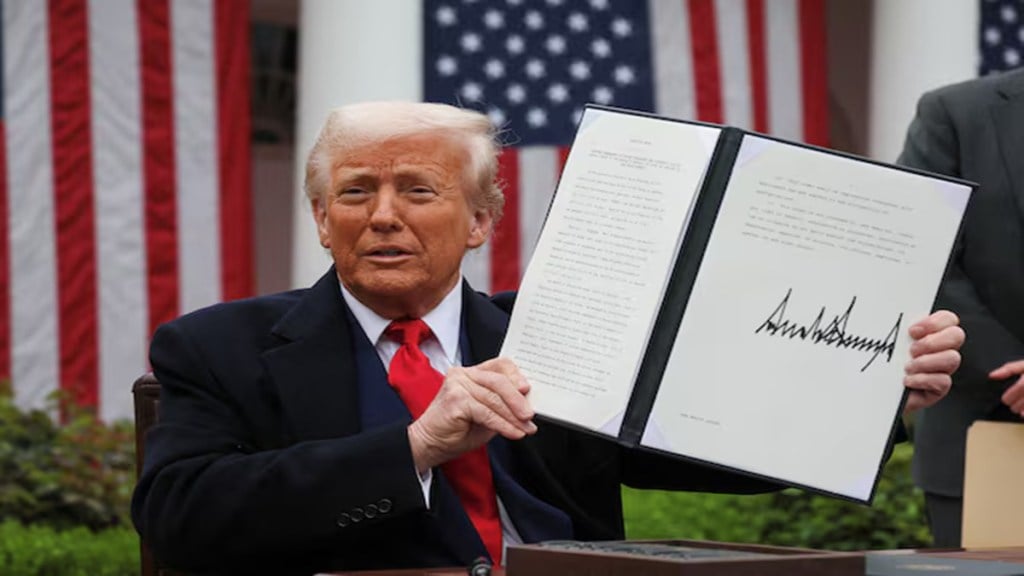“The trouble with the world is that the stupid are cocksure and the intelligent full of doubt,” said Bertrand Russell.
Cocksure, he is, but is he stupid? The decision to pause reciprocal tariffs for 90 days is a clear sign he is not. The imposition of reciprocal tariff was certainly not a stupid decision and there is a method in his madness. More so, because he doesn’t have much time to do what he wants to do as he can’t run for presidency again. And he failed, in his first term, when he tried to do things in a milder way.
And those who think the pause is a result of market turmoil and the fear of recession etc, do not understand him. That is exactly what he did in case of Canada and Mexico, after imposing the tariff early in his presidency. As of now, while imports of USMCA (United States-Mexico-Canada Agreement) compliant goods are duty free whereas sector-specific tariffs for metals, automobiles are in force.
As stated by the US president multiple times, the ultimate enemy is the trade surplus enjoyed by the rest of the world over the US. This stood at over $1.2 trillion in 2024 as per the bureau of economic analysis, with China having the largest surplus. Imagine, a small country like Vietnam having a surplus of $124 billion, with US exports being less than 10% of what it imports from the country! No wonder Vietnam figures at the top of the tariff chart, imposed by US. While Trump appears to have lost touch with the principles of economics, what he knows, and possibly, economists do not want to know, is that the free trade principle can sustain only when there is a level playing field. That China could fool the world for last 20-25 years is the result of China’s dominance in comprehensive national power.
And the 90 days pause gives a breather to everyone, including the US consumers. He has managed to bring all the countries on to the negotiating table, something the nudges in the first term failed. The most likely scenario that emerges now is that the trade surplus nations would be forced to reduce their tariffs on imports from the US and bring about greater trade balance. These countries also stand a chance to increase their exports to US for goods facing sector-specific tariffs like metals, automobiles, depending upon the terms of the agreement. They would have an edge over countries which would face higher rates of tariff, reducing the competition. And it would not be surprising if sufficiently large number of countries reach an agreement since exports to GDP is higher for most of these countries than the US.
Where India fits into all this
India read the writing on the wall pretty quickly, starting off with the Prime Minister’s visit, followed by the commerce minister, with the external affairs minister chipping in through his own network. The target for the US is to bring down India’s trade surplus which stands at about $50 bn. Their target also seems achievable due to the possibility of India increasing its energy sourcing, high-end goods such as cars, wines etc from US, which would not cause a burden on the common man in India. Yet, the imports of agricultural products would be a tough trade-off.
Recall that Indian government had also increased tariffs especially in sectors such as electronics, solar power etc since the pandemic, much to the chagrin of the economists. But the decisions have been fruitful, as demonstrated by the significant scaling up of manufacturing base for electronic goods and sharp increase in its exports, with solar also moving in the same direction although the magnitude of gains are lower.
So, where would things be, a year from now?
It could be a great divergence between those who cut a deal with US and those who do not. The US administration has said that about 50 countries have reached out to them to negotiate a deal. The US imports, a year from now, may not change much, except in sectors facing specific tariff. But the country of origin may have (assuming China doesn’t come to the table). On the other hand, US exporters would have much to cheer, especially in sectors like energy, agri-products and the high-end goods. The only variable here is the short-term pain of increased inflation and the possibility of a recession. Though lower fuel prices may provide some surplus to the gasoline guzzling nation, which could partially compensate for the increased cost of living, the reaction of the domestic population still remains uncertain.
From India’s point of view, India Inc, as also the investors, the government and everyone else, has lot to look forward to. Those who can keep their money in the market for a year and have the nerves to hang-in there, must stay put!
The bigger question is, when will China blink?!
Is Chinese economy on the way to a decades long downward spiral, much like what Japan faced since 1990s?
Disclaimer
Author is the founder of the portal – https://www.indiaeconomyandbusiness.com/
Disclosure: The writer and his dependents do hold the stocks discussed in this article.
The website managers, its employee(s), and contributors/writers/authors of articles have or may have an outstanding buy or sell position or holding in the securities, options on securities or other related investments of issuers and/or companies discussed therein. The content of the articles and the interpretation of data are solely the personal views of the contributors/ writers/authors. Investors must make their own investment decisions based on their specific objectives, resources and only after consulting such independent advisors as may be necessary.

